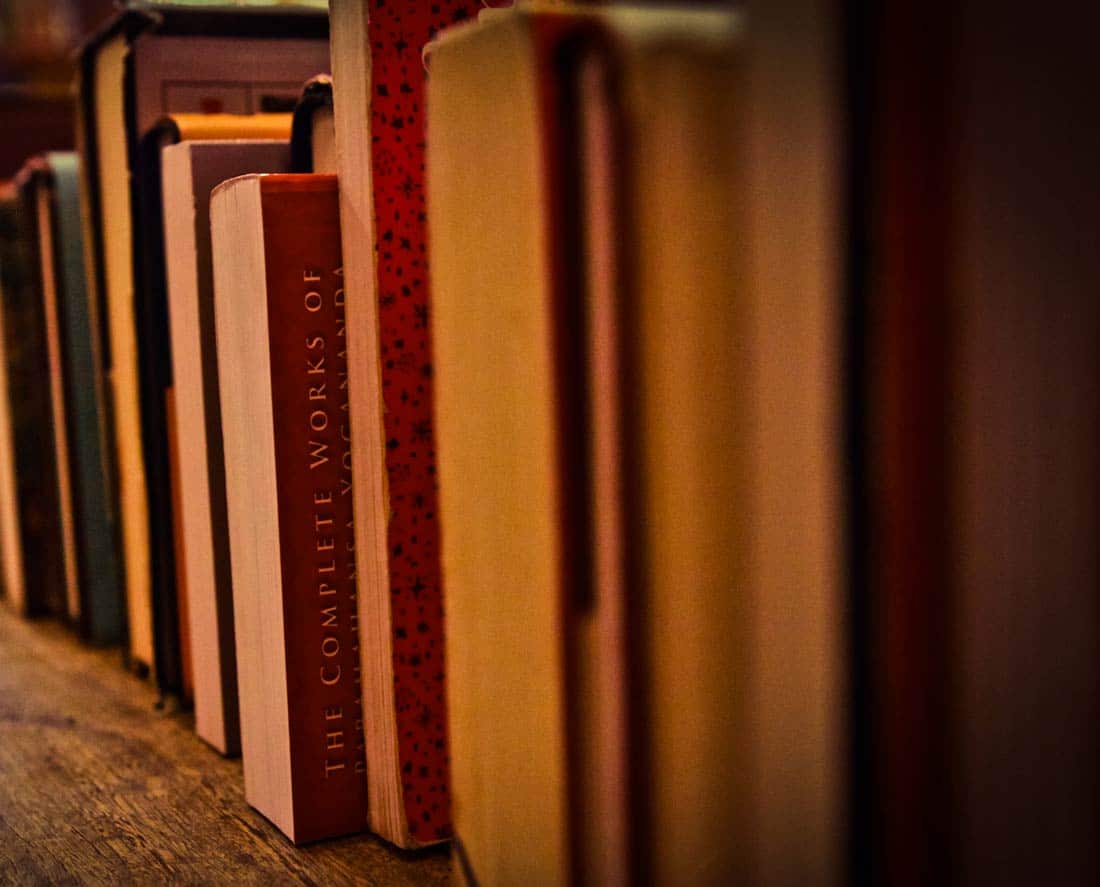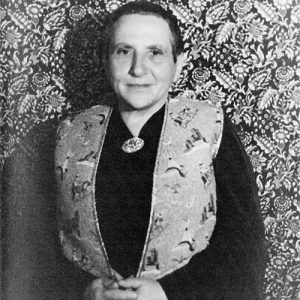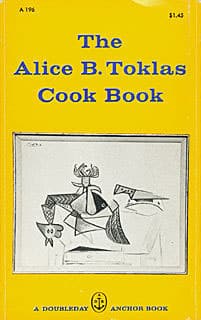
The names Gertrude Stein and Alice B. Toklas are synonymous with literature, and have been intertwined for more than a century. From their first meeting in Paris in 1907, Gertrude & Alice were inseparable. But who were these two Americans who lived together for almost forty years and how did they become so famous?

Gertrude was from a prominent Jewish family and spent much of her childhood in Oakland, California. She moved to Paris in 1903 with her brothers, and soon after they began collecting the works of up-and-coming artists including Matisse, Picasso, Braque and Gris. The siblings quickly became well-known for their collection and later began hosting weekly salons so guests could view the artworks.

Alice was also from a Jewish family in San Francisco and was a friend of Gertrude’s brother, Michael. For a time, she studied music, but in 1907, just after the San Francisco earthquake, Alice decided to visit Europe with a friend. It was on her first day in Paris that she was invited to tea at Michael’s home. It was there she met Gertrude, and the rest, as they say, is history.
In addition to her interest in collecting art, Gertrude was also fascinated by writing. But not conventional writing; she wanted to do for writing what Picasso had done for art. She felt that the sounds of words, their repetition, and their place on the page, with or without punctuation, would create a new literature, appropriate for the 20th century. The line, “Rose is a rose is a rose is a rose”, from her 1913 poem, Sacred Emily, is among the most famous and quoted in the world.
Her first book, Three Lives, was self-published in 1909, and while publishers found it too unconventional, it is among her most accessible books. Finding publishers for subsequent books was even more difficult, so in the early 1930s, the friends launched their own publishing company. which subsequently published five of Gertrude’s works. Though Gertrude’s writing had a very limited audience, it influenced many of the young writers who visited Gertrude & Alice’s salon at 27 rue de Fleurus, including Ernest Hemingway, F. Scott Fitzgerald, Paul Bowles, Ezra Pound, and Thornton Wilder. (Gertrude and Alice later became godmothers for Hemingway’s first son). Gertrude’s major work, The Making of Americans, is almost 1000 pages long. It was published in 1925 in al imbed edition almost 15 years after it was completed.
Stein in 1935 photographed by Carl Van Vechten
Gertrude Stein sitting on a sofa in her Paris studio, with a portrait of her by Pablo Picasso, and other modern art paintings hanging on the wall (before 1910)
Alice was usually referred to as Gertrude’s “Companion” or “secretary”, but, in actual fact, she was so much more. She was her lover, her muse, her confidante, public relations director, publisher, editor, translator gardener, cook and veterinarian to their beloved pets. It is also ironic that Gertrude’s most successful book, published in 1933, was the Autobiography of Alice B. Toklas, in which Gertrude writes in the voice of Alice. The success of the autobiography brought Gertrude and Alice back to America for their only visit in 1934-35 for Gertrude’s triumphant and widely publicised tour. They soon became the rock-stars of their day, with their every move covered by newspapers and radio.
Gertrude and Alice also experience the two World Wars together. In WWI, they drove through France delivering medical supplies to hospitals for French and American soldiers. Alice proudly recounted 40 years later how she had hidden 5,000 thermometers which she would distribute as she saw fit. In WWII, Gertrude and Alice were fortunate to survive the Nazi occupation of France; largely due to the kindness of the villagers in the rural towns where they lived.
Following Gertrude Stein’s death in 1946, Alice was confronted with new challenges that were both financial and personal. For more than ten years, she devoted considerable time to getting Stein’s unpublished works published by Yale University. Letter writing was an integral part of their life together, indeed thousands of their letters survived, with most being housed at Yale University. It was not until after Gertrude’s death that Alice began writing books and articles in magazines; primarily about cooking and fashion, which were two of her passions.
In 1954, The Alice B. Toklas Cookbook was published, which made her a celebrity in her own right and a cultural icon for the next 20 years; partly because of the hashish fudge recipe, which had been given to her by a friend. The cookbook, which has never been out-of-print and has been translated into more than 15 languages, is both a collection of recipes and reminiscences of Alice’s life with Gertrude. Another cookbook followed in 1958, and her memoir, What is Remembered, was published in 1963.
Gertrude and Alice, because of their influences on modern art, writing and cooking, continue to inspire and challenge readers, writers, scholars, actors, visual artists and cooks. They have a long-lasting legacy that is still relevant today in the twenty-first century.

Copyright © 2024 Gertrude & Alice | Built By Smart Robbie